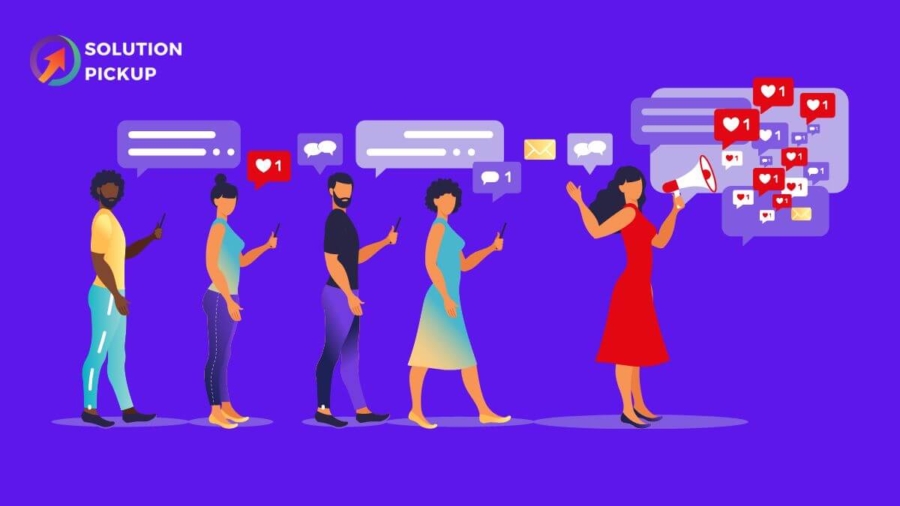Many businesses are still determining how much influencers should pay for their services, even though influencer marketing has become a popular marketing strategy.
This article aims to guide how to determine a reasonable price for influencer collaborations based on various factors that influence influencer marketing pricing.
Types of Influencers:

Influencer marketing pricing is determined by the type of influencer you intend to work with. Micro-influencers, who typically have between 1,000 and 100,000 followers, usually charge less than macro-influencers, who have more than 100,000 followers.
However, a smaller business with a limited budget may find micro-influencers a better fit. Because they often have more engaged audiences and higher conversion rates.
Social Media Platform:
Platforms play an important role in determining influencer marketing prices. Instagram is the most popular platform for influencer collaborations.
Influencers on this platform tend to charge more than those on Twitter or TikTok. Instagram is a visual platform requiring high-quality editing and creation skills.
Influencer’s Reach and Engagement:
When determining the price of influencer services, it is important to consider an influencer’s audience size and engagement rate.
Influencers with larger followings and higher engagement rates are likely to charge more. In addition, influencer engagement rates can vary significantly.
An influencer with a smaller following but a high engagement rate may provide a better return.
Type of Content:
Price also varies depending on what type of content an influencer creates. For example, creating a high-quality Instagram post or YouTube video takes much more time and energy than just tweeting or posting on Facebook.
In light of this, influencers expected to create more complex content may charge a higher fee.
Costs of expert influencer marketing services
Campaign Goals and Deliverables:
It is also important to consider the goals and deliverables of an influencer campaign when determining its pricing.
For example, a campaign aimed at increasing brand awareness may cost less than one aimed at driving sales in addition to the number of deliverables. Such as social media posts and blog posts, there will also be a direct impact on the price.
Exclusivity:
It is common for brands to request exclusivity from influencers, which excludes them from working with competitors during the campaign period. Also, the number of deliverables, such as social media posts, blog posts, or videos, will affect the price.
Contract Length:
A long-term influencer collaboration contract may offer a discounted rate compared to a shorter-term contract, another factor to consider when determining price. When committing to a longer contract, make sure the influencer is a good match for your brand and campaign objectives.
Industry and Niche:
In addition to the influencer’s pricing, the industry or niche in which they operate has a bearing on the price. For instance, fashion and beauty influencers may charge more than those in less competitive niches, such as gardening and cooking.
Location:
Additionally, the influencer may charge more for their services if they live in a major city or country with high living costs.
Reputation and Experience:
Brands that collaborate with influencers with a strong reputation and a proven track record of successful collaborations can expect to pay a higher price. As a result of the large and engaged audiences these influencers have, brands benefit from their efforts.
Negotiation:
It is possible to offer additional incentives or adjust the campaign’s scope to fit budget constraints. Business owners should be prepared to negotiate with influencers to ensure they receive a fair service price. It is possible to offer additional incentives or adjust the campaign’s scope to fit budget constraints.
Measurement and Analytics:
Influencer campaigns must be tracked and measured to determine influencer campaign effectiveness and return on investment. Businesses can assess the success of a campaign and adjust future collaborations based on metrics like engagement rates, website traffic, and sales.
Conclusion:
Influencer marketing pricing can vary widely depending on a wide range of factors. It depends on the type of influencer, the social media platform, the reach and engagement of the influencer, the type of content, the campaign’s objectives and deliverables, exclusivity, and the length of the contract.
It is important that businesses carefully consider all of these factors and work with influencers to figure out the right price for their services. To ensure a successful campaign, it is also necessary to establish clear expectations and goals.
Frequently Asked Questions:
What is the rate for an influencer?
Nano-influencers (those with 1,000 to 10,000 followers) might charge anything from $10 to $100 for every social media update. The price per post ranges from $100 to $500 for micro-influencers (10k-50k followers). 500$ – 5000$ per post for mid-level influencers (50,000 – 500,000 followers). Large-scale influencers (between 500,000 and 1,000,000 followers) can expect to get paid between $5,000 and $10,000 for every publication.
How much should I allocate to influencer marketing?
Micro-influencers can expect to make between $10 and $100 for every post. Micro-influencers can expect to make between $100 and $500 for every article. Payment ranges from $500 to $5,000 per post for mid-level influencers—the price range for posts by macro-influencers: $5,000-$10,000.
How do you calculate influencer marketing?
Using the previous example, the return on investment (ROI) would be 200% if the influencer’s $5,000 fee resulted in $10,000 in profit (through influencer-related sales or earned media value). Just multiply (Revenue/Cost) by 100 to get the answer. Most brands can benefit greatly from utilizing influencer marketing.
What is the cost per engagement influencer marketing?
Cost per engagement indicates an influencer’s effectiveness (CPE). Simply put, it’s the amount of money you’re willing to spend to increase the number of likes and comments on a post that includes your brand. You want to have a lower CPE.
What is KPI in influencer marketing?
The success of your influencer marketing efforts may be gauged by tracking key performance indicators such as audience reach, user engagement, and the number of leads converted. Key performance indicators (KPIs) in influencer marketing include Getting your message out there. Impressions/views on the content. The number of likes, comments, and shares of a piece of content.

